The call came at 6:15am. The voice on the line sounded artificial, almost computerised, with chattering background noise. It must be a sales call, thought Graham Bloor. He hung up.
It rang again. This time when Graham answered, he waited, listening — just in case. It was a hospital in Brighton. What he was told would change his life, and his family, forever.
His son Thomas, one of Graham’s 21-year-old triplets, was in intensive care. An overdose. The doctor said that Tom had gone into cardiac arrest and was “resuscitated in the community” — at the scene of the overdose, a party in Brighton — and that the family should come.
Graham, himself a doctor, knew the most important question to ask: What is Thomas’s score on the Glasgow Coma Scale? This tells you, following a trauma to the body, how grave the situation is, how deeply unconscious someone is. Anything less than 8 indicates severe brain injury.
“Three,” the doctor said.
Graham knew what this meant. His son’s brain was all but dead.
Ninety miles away in Eastbourne, another phone rang. Barbara Bloor picked up, irritated that her husband up in London would ring so early, just because he has to be awake at that time. But then she heard him say: “Thomas is in intensive care on a ventilator.”
“I remember screaming,” Barbara says now, four months on.
She began to pace up and down the landing of their family home where she and Graham had raised their boys, Thomas, Paddy, and Eoin. She had been a nurse for decades but now she did not know what to do. They had student lodgers staying. Things had to be organised. She ran to the car and started driving. Autopilot. Trying not to crash. Trying to get to the hospital.
Barbara and Graham both had the same thought: This means we’ll lose two sons. Their eldest triplet, Paddy — the cleverest, most extroverted of the three — had been fighting a drug problem for years. They had tried everything. They knew he might not survive. Now that Thomas was unlikely to make it, it was only a matter of time before they had only one son left.
But there was so much more that they were about to discover.
They would learn that the drug on which their son had overdosed was GHB. They had never heard of it. The potent intoxicant comes in either powder or liquid form, and suppresses the central nervous system into a high that users describe as a like a combination between alcohol and ecstasy: disinhibiting, euphorically.
While much of the media refers to it as a “date-rape” drug, within the LGBT community GHB is known as one of the three key drugs used in chemsex, the drug-fuelled sex scene particularly popular among gay men. Its rising use over the last decade has entwined with increasing availability: Dealers sell GHB through gay dating apps.
But the Bloors also did not know what makes this substance uniquely dangerous. They had no idea, either, how many people GHB kills. This is because no one knows what the total figures are. It takes months for the family to discover why there is such a blackout: why the data is so patchy and the response from the authorities is so scant. Silence surrounding such deaths, meanwhile, pervades.
The evidence that is available suggests in Britain alone it could be hundreds who die from GHB every year. A question, therefore, encircles these figures: How many people — how many gay men — have to die before something is done?
The Bloors want to challenge the stigma surrounding GHB and stop more young men dying. They invited BuzzFeed News to interview them and their other sons about what happened. It is the first time an entire family has spoken out about the loss of a loved one to GHB. Graham and Barbara Bloor are uncomfortable having their photo taken and disclosing the most personal details about their family, but, they say, they cannot allow this silence to continue.
“I feel we have to,” says Graham. If people do not start talking, he fears the drug will proliferate more widely. He knows, too, that there was only one reason his family uncovered the truth about their son’s death: chance.
Barbara reached the Royal Sussex County Hospital first. It was March 20, 2018. Eastbourne to Brighton is only 20 miles, whereas Graham was in Camden, north London, at least 90 minutes away. Barbara found Thomas in the intensive care unit, wired up to multiple machines.
“Every orifice had a tube,” she says, clutching herself by the elbows. Her voice is soft, almost breathy, with a strong Irish accent.
“I remember hanging on to his hand and squeezing like hell and I would not let it go, thinking, Oh my god, oh my god, what am I going to do? I remember saying, ‘I need to sit down.’ I just sat there looking at all these bloody machines.”
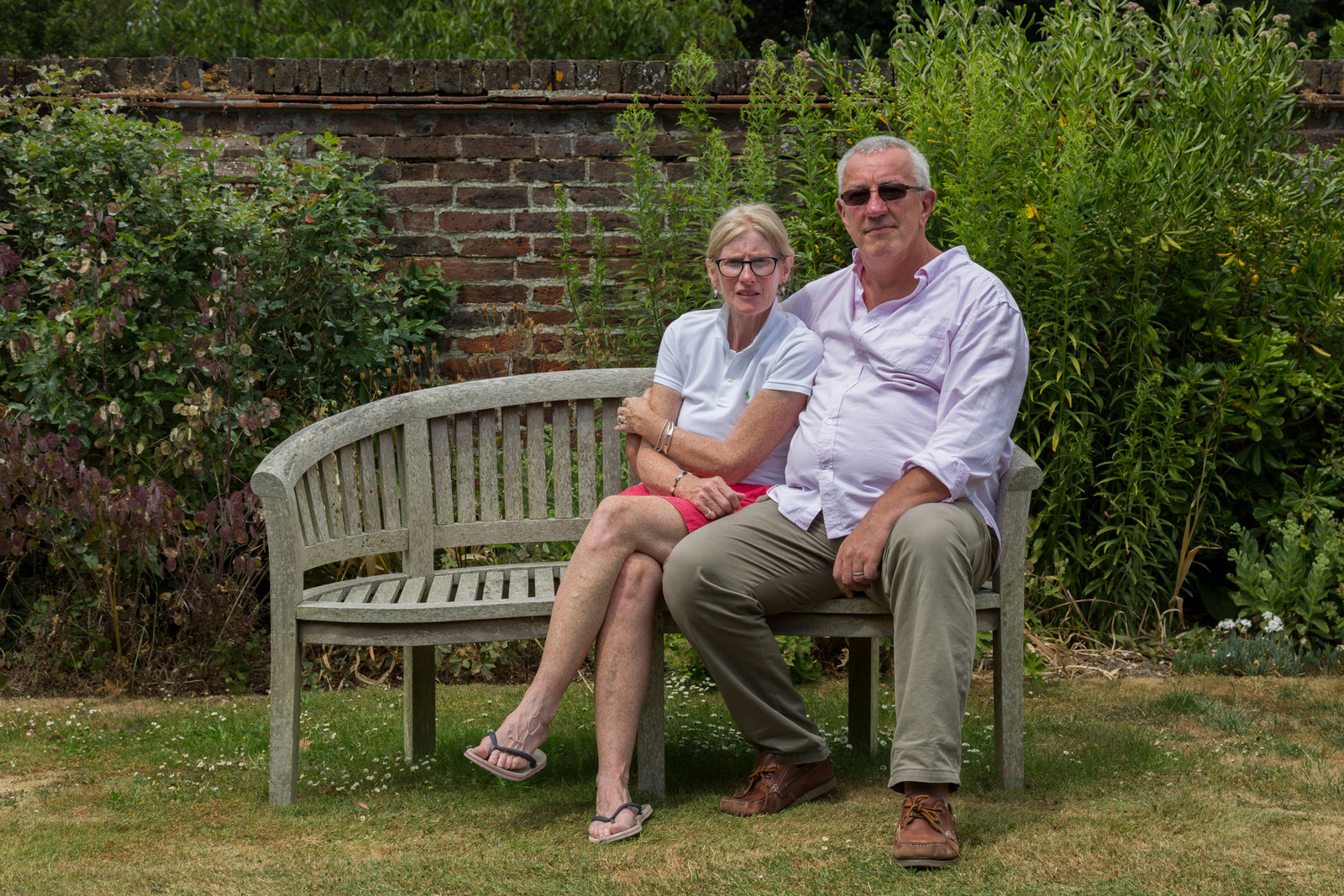
Her first words to him came in fury and frustration. “‘Wake up until I kill you!’” she says. “I thought, Do you not know any better than this?” But the anger ebbed, enabling other thoughts. “You have hope for a little bit: maybe — maybe — he’ll get better.”
We are sitting on patio furniture looking out across the lawn of their garden in Eastbourne: mother and father, side by side. Behind them is their large, comfortable house. Condolence cards stand on a chest of drawers. Barbara offers drinks, says there is ham in the fridge, that she could make a sandwich.
Graham was in London that morning because he had been visiting Eoin, their other triplet. All three were at university. After ending his call to Barbara, Graham went into Eoin’s bedroom to wake him and tell him, but as they talked, something did not seem right. How could it be Tom? How? It was Paddy who had the serious drug problem.
They remembered something: Paddy had Tom’s passport on him. Tom and Paddy are identical. Eoin is not. They rang Tom’s number. No answer. Eoin jumped in a cab a few miles across north London to Tom’s student accommodation.
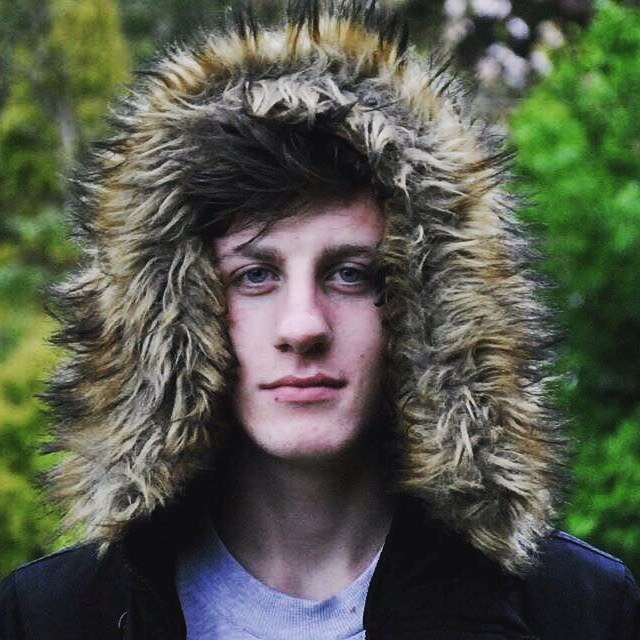
He was there. Their suspicion proved correct: It wasn’t Tom in hospital; it was Paddy, the brother who, as well as being the brightest and most sociable, was also the most troubled. But as Paddy lay in hospital, Barbara was at his bedside still thinking it was Tom, talking to Tom, telling Tom she loved him.
In the shock and desperation to reach the hospital in time, Graham, Eoin, and Tom, now on the London underground, didn’t phone Barbara until they were on the train to Brighton.
For over an hour she thought it was Tom unconscious, with a machine breathing for him. Only when Graham put Tom on the phone to her, from the train, did the reality hit.
“It was a relief it wasn’t Thomas,” she says, looking down, as if ashamed of what she is saying. “But then I had to rethink it was Paddy. You’re talking to [who you think is] Thomas and then you go back in and you say, ‘God, it’s Paddy.’ You speak differently to them.”
Although they were the identical twins within the triplet, and similar in many ways — both sporty, academic, and musical — Paddy was gay but Tom is straight. Eoin, their nonidentical triplet, is also gay.
Graham breaks down when he talks about the train journey: The guard let them through without paying. “To have that contact with people…” His deep voice and faint Mancunian accent halt suddenly, choked, as his wife finishes for him.
As we talk, they repeatedly finish each other’s sentences, not in the usual way, but because the other cannot continue. To look from one to the other is, throughout, to see one person speaking while the other stares straight ahead, eyelashes clumped, sodden.
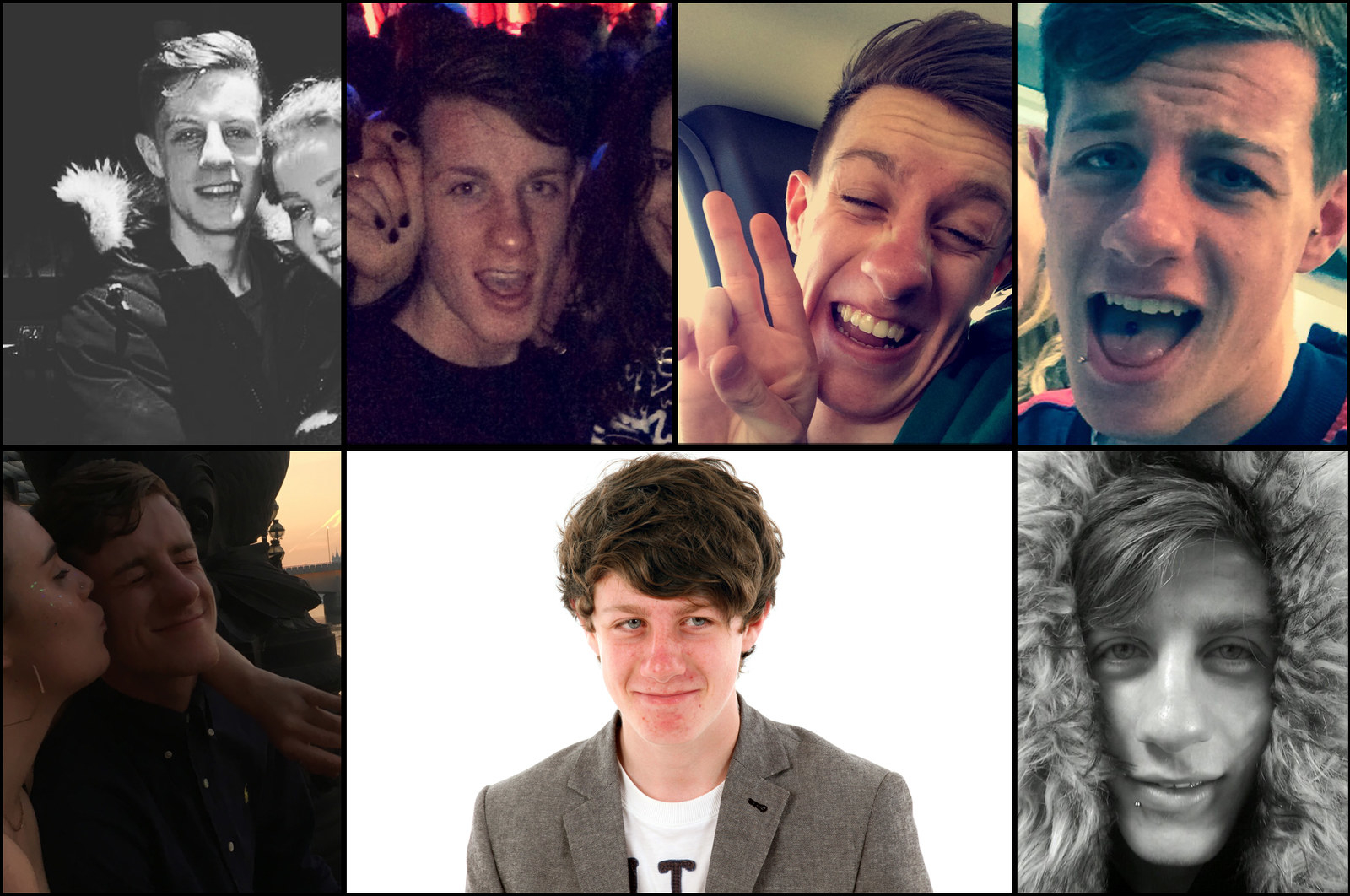
Of the three men, Tom was the last inside the intensive care unit. He talks to BuzzFeed News on the phone.
“I remember going up to the doors and shaking,” he says. “I saw Mum. She broke down.” He begins to describe how he approached his identical brother.
“As you come through the doors you can see his feet. As soon as I saw them I froze. You don’t look at their face straight away. You can’t. You have to work your way up their body. I saw his feet, went up to his knees, to his waist and then I saw his chest on a ventilator — a machine, a robotic thing. I saw his face. His head was turned on the side, his jaw was down, his eyes were shut. He looked pale as fuck. He was swollen. He looked like he’d died. It was the weirdest thing for me because he looked just like me. I felt myself blacking out.”
Tom made it on to a chair next to the bed. “I couldn’t touch him; that was too far. I went outside and was with my dad and said, ‘He’s not coming back from this.’ We looked at each other. He said, ‘I don’t think so.’”
At the hospital, the family was dividing in two: Barbara and Eoin stayed with Paddy almost constantly, clinging to him — and to hope. Graham and Tom, accepting the inevitable and unable to cope seeing Paddy like that, largely remained outside.
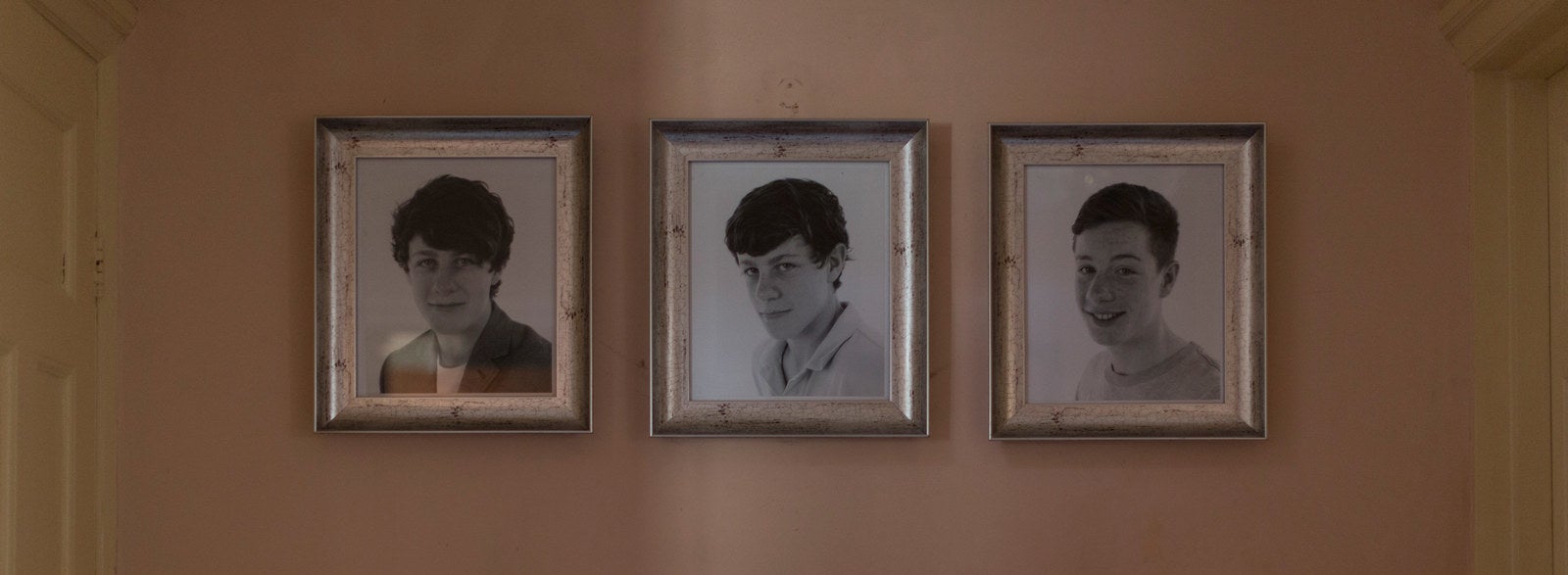
Eoin went into overdrive: trying to understand what was happening, being practical, speaking to the police and the doctors. He would open Paddy’s eyes every few hours. “Because to me that meant life,” he tells BuzzFeed News at his flat in Camden. There was something else preoccupying him, too.
“I was thinking of the whole past that led to this: his psychology.” Later, Eoin, like the others, returns to this.
But at the time, the family waited. Barbara could not eat or sleep. She says she managed part of a Crunchie bar, but for days that was it. Graham explains what the doctors were doing to try to save Paddy: dropping his body temperature to reduce the swelling in the brain, putting him on a ventilator to ensure he kept breathing.
The clinicians still did not know what drug he had taken, only that a vial had been found on him. But Paddy’s body was behaving in a way that was typical of others in GHB-induced comas. “Your blood pressure crashes,” says Graham. “Your respiratory rate crashes.”
The family were left contemplating impossible questions.
“I went through the [quandary of] ‘Do you want him to be severely physically and mentally disabled?’” says Graham. “I was asking God: ‘Let him live, even if…’”
Paddy’s boyfriend, Will, was making his way down from Leeds. Friends arrived to visit him.
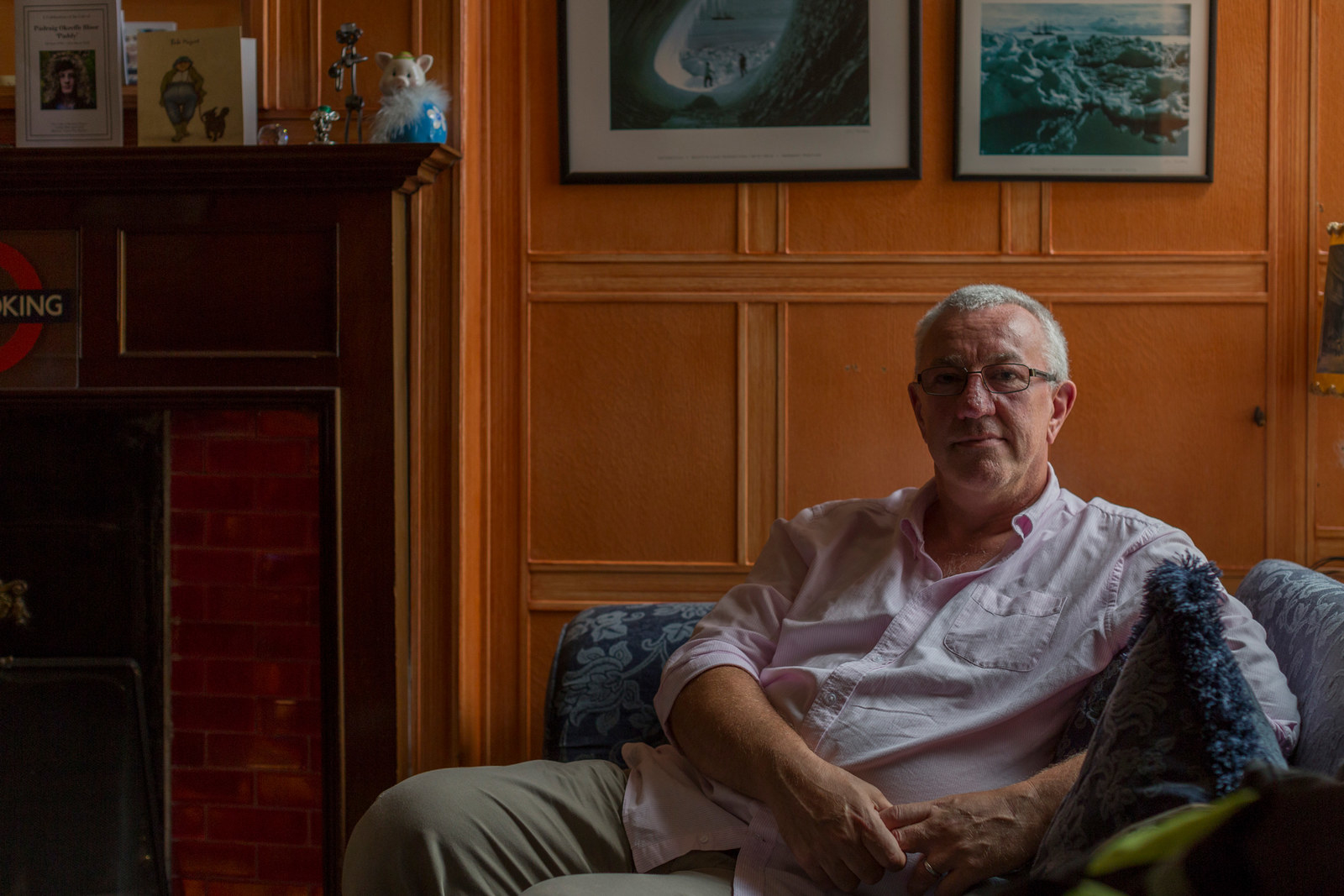
He had another visitor: the retrieval nurse, the person responsible for liaising with the family over whether his internal organs would be donated. A family debate ensued about whether to approve it.
And then, two days after Paddy was admitted, the doctors attempted to wean him off the ventilator, to see if he could breathe on his own. It was Friday, March 23. To everyone’s surprise, Paddy began to breathe. His heart rate also remained stable. Suddenly there was hope. “The bugger was breathing on his own!” says Graham.
But Graham and Tom knew that it would likely not sustain. Tom remembers their exchange. “As soon as he started breathing we looked at each other and were like, “The fucking prick! He’s doing a typical Paddy!” To them, the contrary, unpredictable free spirit was having one last laugh — on them.
It did not last.
Barbara and Eoin were beside Paddy when his condition began to decline, in the late morning of the 23rd. He stopped responding so well to the ventilator. “His heart was going through his chest,” says Eoin, “massive tachycardia [where the heart races]. It looked like an alien was in his heart — 250 beats per minute. BANG BANG BANG. Then it drops back down.”
Eoin holds his hand flat at shoulder height, bringing it down gradually as he recites each falling heart rate.
“50...45...5...4...3...2...1...”
Paddy died in front of them.
His boyfriend did not arrive in time. It was too late for his organs to be donated.
Eoin could not absorb what had just happened: that he had just lost his brother.
“Mum was a state. Crying, holding his hand, hugging, kissing, saying, ‘I hope you’re up there… Look down on us.” Eoin then talked to Paddy, too, telling him he loved him, telling him to take it easy.
Graham’s phone went. He was with Tom. “We knew it was coming,” says Tom. “My dad picked up the phone. He started crying. He just looked at me and shook his head. I was so numb. Empty.”
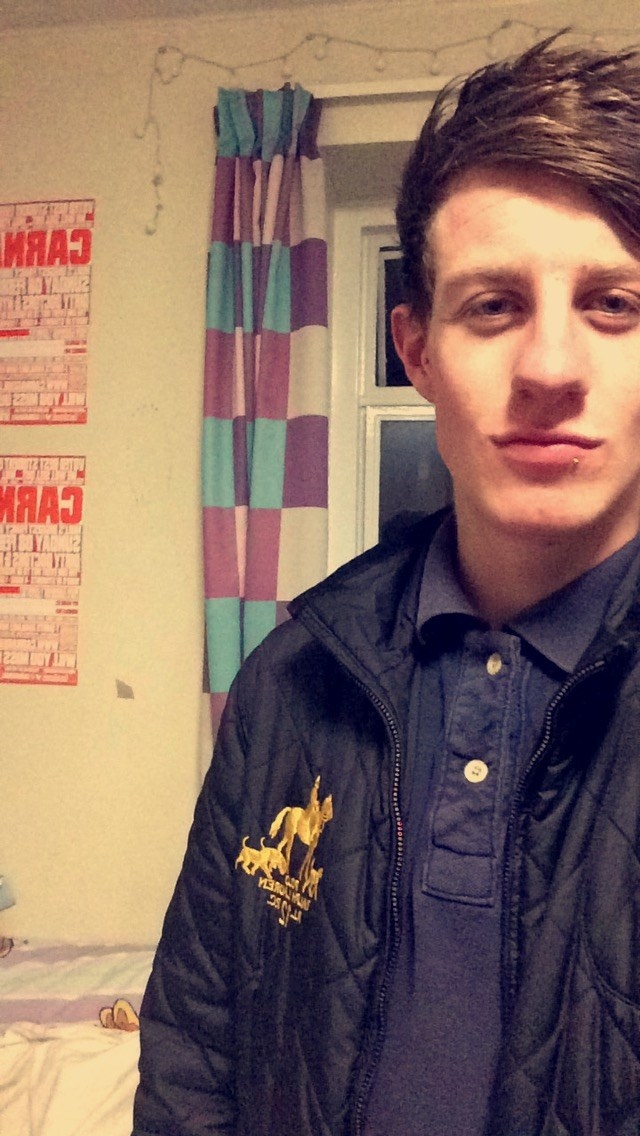
Eoin and Barbara washed Paddy. Eoin did something else, too, shortly before and shortly after his death: He photographed his brother. He lifts his phone and reveals the pictures — he does not normally show them to anyone.
Paddy’s head is slightly to one side, attached to a mess of wires and monitors, with swelling around the mouth where the doctors had to quickly insert a tube. Eoin took the photos initially in case Paddy woke up, to shock him into never taking drugs again. But Eoin struggles to explain his reasons for the last one. It seems he needed something to jolt himself into accepting the unfathomable.
The next few weeks were awash with questions, none of which provided comfort. What had he taken? What could they have done? How many others are dying like this?
The Bloors managed to get into Paddy’s phone by guessing his passwords and found texts suggesting he had taken GHB. Without this moment of luck, they would have never known the truth. Neither parent was aware of the drug, despite Graham being a retired anaesthetist and the substance occasionally being used in anaesthetics — it is not found in clinical settings in Britain.
Graham ordered a test to see whether it was GHB that killed his son. He offered to pay the £150 fee. It would take four weeks for the result and longer still to piece together the events leading up to the overdose.
During that time, Graham started researching. What he discovered, which is known to people who try to raise awareness of the drug — and has been reported by BuzzFeed News — baffled him. Following a sudden death where drugs are suspected, toxicologists routinely test for around 300 substances to isolate which were responsible.
GHB is not one of them. It is not part of the standard screening — hence Graham having to request it — and is only tested for when an individual toxicologist specifically asks for it.
For this to happen, the toxicologist must examine the circumstances of the death and be sufficiently aware of GHB and the scenarios in which people take it. This would require, for example, knowledge of the chemsex scene, in which gay men typically use three drugs — GHB (or in its other form, GBL), mephedrone, and crystal methamphetamine — either between two people having sex or more, often at private parties.
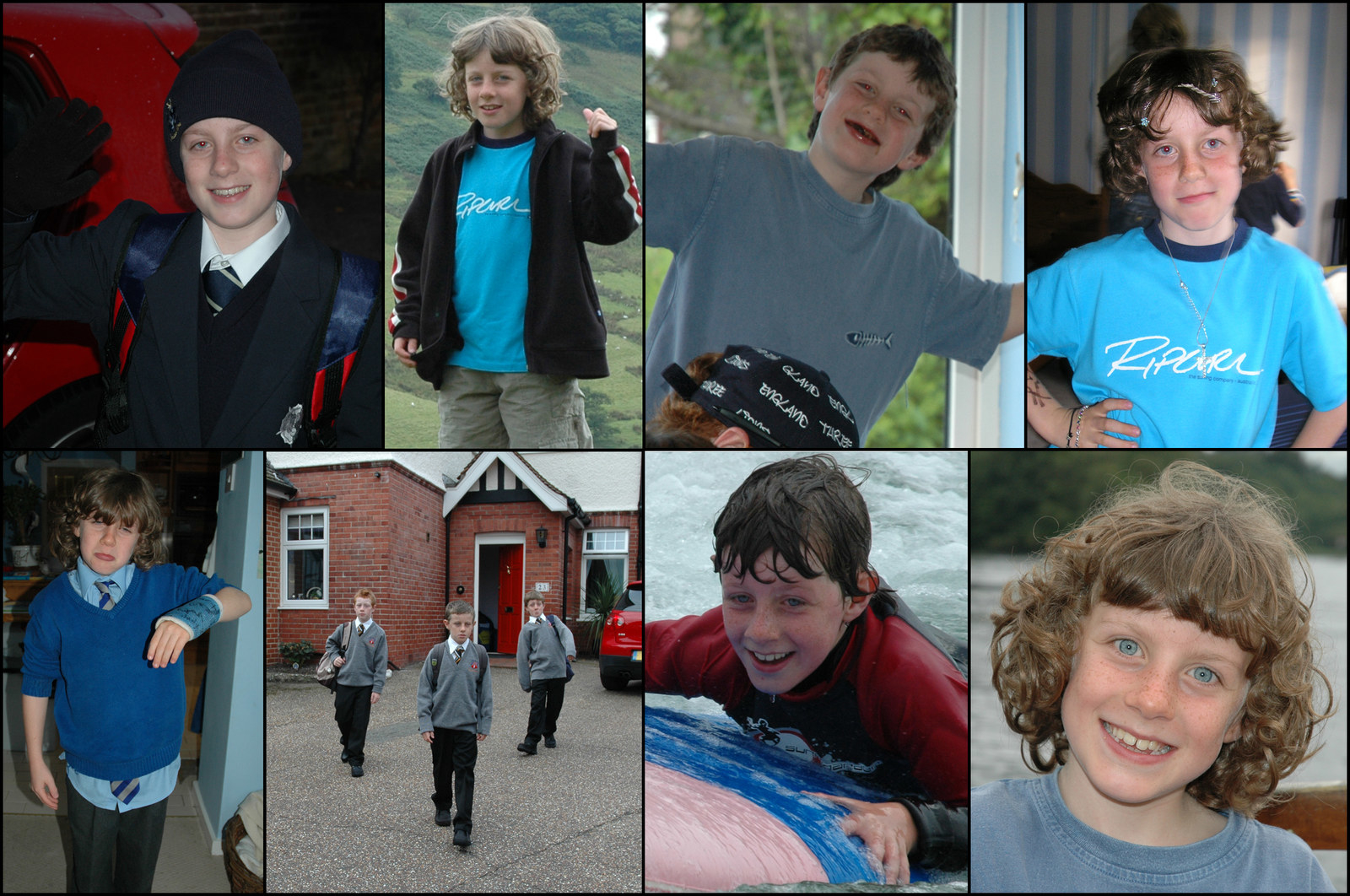
“GHB should be part of a toxicology screening, routinely,” says Graham. The fact that it currently isn’t even when drugs are involved is crazy, he says.
But if a toxicologist wants to test for GHB, a urine sample is needed, which is only available in about 50% of such deaths. And even then, the test needs to be conducted soon after the death as the drug leaves the system after a few hours.
Given these obstacles, the figures that are available offer only a glimpse into the potential magnitude of the problem. A 2016 study by Imperial College London found that in just a few London boroughs the number of deaths from GHB — and these are only the ones known about — more than doubled in one year, between 2014 and 2015, to 29. With only a fraction of the country included in this, and many deaths in those areas not tested for GHB, there could be hundreds dying each year from it.
Graham is now campaigning for three things to prevent more GHB deaths. The first is including it in the standard screening. If the scale of the problem were known, he says, public health officials could then mount a proper response.
He also wants GHB (and GBL, which converts to GHB once absorbed by the body) to be reclassified. Currently it’s a class C drug, along with tranquilisers and steroids. “It should be a class A if only to label it as lethal,” he says. Heroin is a class A drug and kills roughly 1,200 Britons each year. But, says Graham, “the proportion of risk” with GHB use, compared with heroin, is “much higher”.
Beyond this, Graham and his family want people to be educated about GHB and GBL, usually referred to as simply “G”.
“Even Paddy’s generation has very little insight,” he says. And his son, he says, was far from a naïve drug user. What few people know is the uniquely dangerous properties of GHB, says Graham — in particular, how easy it is to overdose, fatally.
“With a very small increase in dose, the effect increases a lot,” he says, explaining how much this differs from other drugs that offer a gradual increase in effect. Coupled with this, he says, is what is known as its “therapeutic index” — the difference between a dose that has a desirable effect and one that kills you.
“The therapeutic index for G is low,” he says. “You only have to triple the dose [which could be a few drops of the liquid] and you’re dead.”
Graham has written to his local MP, Stephen Lloyd, and to the Home Office in an attempt to trigger action over GHB. “I fear that Paddy would not have had an [accurate] cause of death if we hadn’t have pushed for GHB to be measured,” he says.
The underlying causes that brought Paddy to the vial of GHB, and to that party in Brighton, however, are more complex and emerge, piece by piece, as each member of the family recounts to BuzzFeed News Paddy’s past.
This begins with Graham saying he will talk about chemsex and his son but not in front of his wife. As Barbara heads inside the house, Graham starts to reveal what he knows about the circumstances of Paddy’s death.
“He came down from London, stayed in Brighton with friends, went to a party that evening. We know he was trying to get more drugs. In the early hours — we’ve got his text messages — he was finally given some extra stuff, then went off to [another] party and we’re back to the chemsex scene, because he hooked into that. It was at a [chemsex] party that he died. The guys there, the police say, acted very reasonably: They were sensible people in their thirties, holding down a job. I think Paddy just made a mistake with taking too much.”

Graham pauses, trying to find the right words. “I do know that there are other types of party,” he says, where in chemsex settings young men “might get abused, passed around. I hope to god Paddy wasn’t in that state. It’s a constant worry to me.” He says Paddy was selling drugs to fund his habit.
“If you’re part of a sex party scene, there’s a very fine line between selling sex and selling drugs, so I… I just don’t know if Paddy sold himself.” Graham becomes upset again. “I want to know as much as possible. But it’s not nice.”
What each member of the family knows is that Paddy was unhappy. “He wasn’t OK,” says Tom. “I think he knew his life was going in a dangerous place.”
The GHB, with its unique capacity for overdosing, was what killed Paddy, but how did he end up drugged and unconscious at that party?
Barbara begins far back, remembering what he was like as a little boy, and finds no clues, at first. “The world just smiled at Paddy,” she says, talking about him with wonderment, as if she still cannot believe what a miracle he was: the boy who didn’t need to study to achieve straight As, who didn’t need to practise to be a good musician, who would escape trouble with charm, hugging, smiling — an uncontrollable explorer, trying everything.
“He was a delight,” she says. “Of the three, everyone would talk about Paddy. He was fun, quick-witted, very kind, very generous. Always ready to help. He was a lovely kid.”
They knew he was gay early on but, despite them being very liberal, Paddy would deny when asked — partly, it seems, as if to remain an untethered mystery. Tom tries to explain why Paddy, this most gifted, beloved boy, sank.
“We got bullied,” he says. Was Paddy bullied for being gay? “Yeah, definitely,” he says. Unlike Eoin, who played rugby and has an almost laddish persona, Paddy was obviously gay. Camp, says Tom. Their home life was also not easy. “Our dad had a mental health issue. He was having breakdowns. Our psychological foundations were skewed.”
Graham confirms his mental health problems, and wonders what part they played. “I feel very guilty,” he says. “The boys’ upbringing has been difficult, certainly in the early years.”
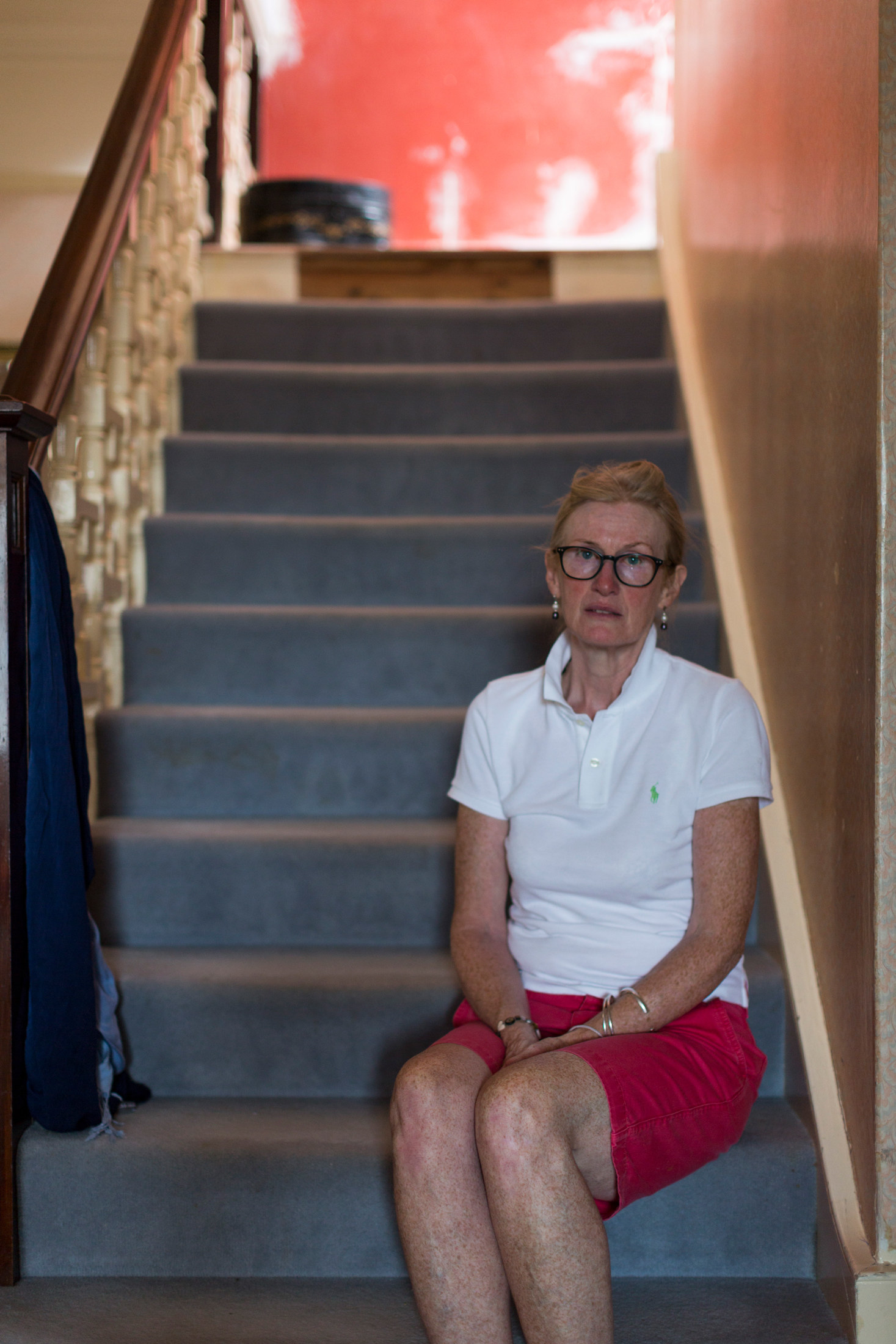
There are many gay men on the chemsex scene, or using GHB recreationally, who are merely hedonists, dabbling, and enjoying everything. But many speak of three background factors: bullying, isolation, family problems.
Paddy began using drugs at 15 — Graham spotted the dilated pupils and mouth ulcers — and it escalated. He would lie, disappear, run away. They would try locking him in his room at night. The next few years proved an endless trial for his family as he descended further. Cannabis turned to ketamine, cocaine, and MDMA. Xanax, the sedative, became a fixture in his daily life, to manage the comedowns.
“A boy who at 9 or 10 would have you in gales of laughter became very solemn,” says Barbara. “I used to wake up at 2, 3 in the morning [thinking], Where is he? Is he under a bush? He had a Canada Goose jacket that he always wanted and I thought, Wherever he is, at least he’d be warm.”
On December 23, exactly three months before he was pronounced dead, Paddy came home from university for Christmas and said he needed help. They helped him withdraw at home. They took him to a psychiatrist and psychologist. They had a tentative diagnosis: borderline personality disorder. Paddy’s moods and experience of the world were more extreme than others’, his parents say, as if the dial was turned up.
Paddy resat an exam early in 2018. He passed it, went out celebrating, and with that he was off the wagon. He saw his psychologist for the fourth time on March 20. The following morning he was in a coma.
It was eight weeks until Paddy could be buried — the cemetery had drainage problems. His body had to be frozen. Tom recalls the last time he saw his brother, laid out, before the funeral. Eoin was in the room, too.
“Paddy’s face had deformed a bit, his nose was weird, his cheeks sucked in. His hands, the whole of his body, was white. His fingernails were purple — bruised purple. I could feel how cold he was. When I touched his hand he was freezing.”
Even his hair was wrong; whoever had prepared the body did not know how Paddy kept it. So Tom ruffled it until it looked right.
Eoin leant over to open Paddy’s eyes, as he had done in the hospital. Tom hated this. “There was no blue,” says Tom. The irises in Paddy’s eyes, as happens after death, had turned black.
“I held his hand, said a prayer, and a Hail Mary,” says Tom. “I told him I loved him — in my head — I said, ‘I love you, I hope you’re OK, I’ll see you soon.’”
Tom and a friend delivered a eulogy at the funeral. Eoin tried to speak but could not.
Just four months on, Tom is only now beginning to absorb the fact that his identical brother is dead.
“There are times when I’m walking through Eastbourne and people will shout ‘Paddy!’ Half the time I don’t even tell them my brother died. I’ve lost a twin. Whenever I look in the mirror I see my brother. At least when I’m older I can see how he would have grown. But I will always have that reminder — my reflection.”
Barbara is beset by memories of the little boy Paddy was, memories that crash into the present. “When he was very young he said to me, ‘I’ll buy you a rose cottage, Mummy.’” She thought at that age that she would be able to rely on him. “Paddy would always be there.”
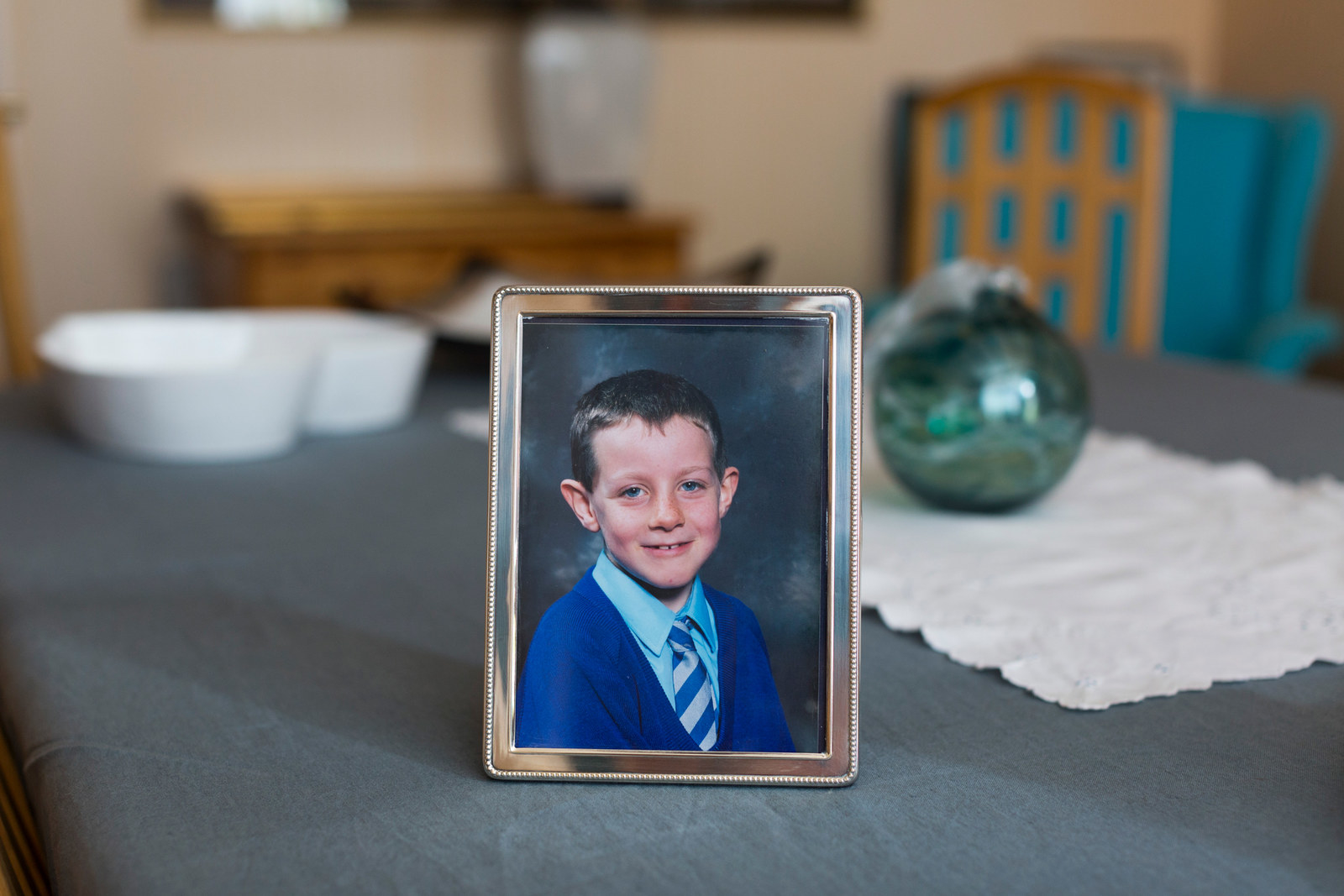
“What a waste,” she cries suddenly. “I’ve lost my eldest, my firstborn. I now have two children, not three. What do you say to someone when they ask you how many children do you have?”
“Three,” replies Graham.
“I know, but where are they?” says Barbara, desolate. “I don’t like saying he’s dead.” She says the words out loud, as if to practise. “My son is dead.”
Graham tries to capture what GHB has done to them, during this early stage of grief, by taking Paddy away. “We lost interest in things. I couldn’t listen to music. I couldn’t watch TV. I couldn’t read. I just existed.”
Barbara inhales and steadies herself. “I’m scared people will forget him,” she says. “Years ago you wore black for a year so people understood — and remembered.”
Next week is the inquest, where more information will surface: details they never really wanted. But they know that unlike many other families whose sons die from GHB, they at least have some answers.
As the photographer takes Graham into the sitting room inside, Barbara moves into the hallway. We stand in silence. Opposite, on one wall, hang three black-and-white photos in a row: Paddy, Thomas, Eoin.
Barbara’s eyes move from one to the next before resting on Paddy. Her arms hang by her sides, her breath — in, out — is just audible.
She stares and stares.
